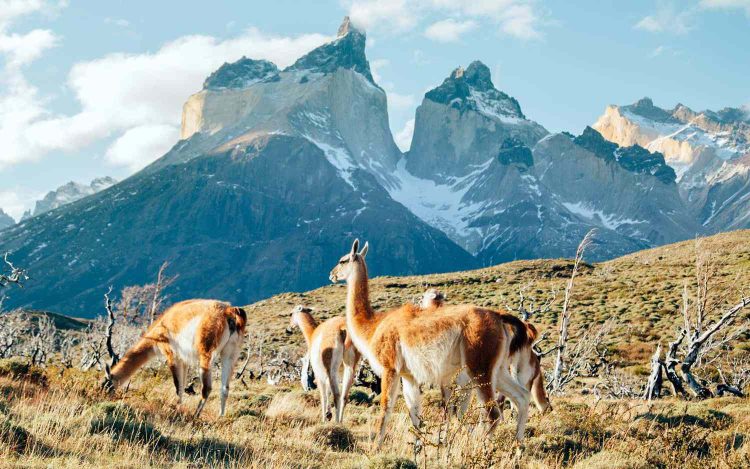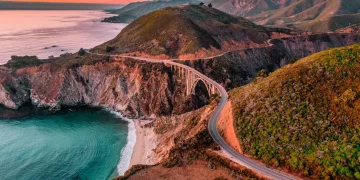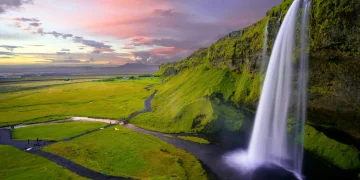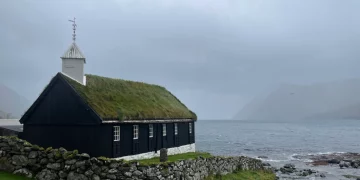Patagonia, a region shared by Chile and Argentina at the southern tip of South America, is a place of dramatic natural beauty. It is home to vast glaciers, rugged mountain ranges, expansive plains, and pristine lakes that paint a picture of wild, untamed landscapes. From towering peaks to vast ice fields, Patagonia is a haven for nature lovers, adventure seekers, and those looking to experience the raw beauty of the natural world. In this article, we will explore the highlights of Patagonia’s stunning scenery, its unique ecosystems, and the incredible outdoor adventures that await visitors in this remote and awe-inspiring destination.
1. The Majestic Andes and Patagonian Peaks
Patagonia is dominated by the towering peaks of the Andes mountain range, which create a dramatic landscape of jagged cliffs, alpine meadows, and glacier-carved valleys. The southern section of the Andes, often referred to as the “Patagonian Andes,” is home to some of the most iconic mountains in the world.
Mount Fitz Roy (Cerro Chaltén)
One of the most recognizable mountains in Patagonia is Mount Fitz Roy, also known as Cerro Chaltén in the indigenous Tehuelche language. This striking peak, which rises 3,405 meters above sea level, is famous for its sharp, spire-like shape and its challenging climbing conditions. The mountain is located in Los Glaciares National Park in Argentina, and it attracts hikers and climbers from around the world who seek to reach its base or summit.
- El Chaltén: This small town in Argentina is the gateway to Mount Fitz Roy and offers a variety of hiking trails, including the popular trek to Laguna de los Tres, which provides panoramic views of the mountain.
Cerro Torre
Located near Mount Fitz Roy, Cerro Torre is another iconic Patagonian peak that stands at 3,128 meters. This needle-like mountain is known for its sheer vertical walls and is a challenge for even the most experienced climbers. The summit is often shrouded in clouds, adding to its mystique and allure.
- Laguna Torre: The Laguna Torre hike is one of the most rewarding treks in the region, offering stunning views of the mountain and its surrounding glaciers. The trail leads to a glacier-fed lake where visitors can marvel at the reflections of Cerro Torre in the water.
The Paine Massif
The Paine Massif is a striking mountain range located in Torres del Paine National Park in Chile. The range is characterized by its sharp granite towers, including the famous Torres del Paine (Paine Towers), which stand tall at over 2,500 meters. These jagged peaks are one of the most iconic features of Patagonia, drawing visitors from around the world to witness their grandeur.
- W Trek: The W Trek is a multi-day hiking route that takes visitors through the heart of Torres del Paine National Park, offering close-up views of the Paine Massif, glaciers, lakes, and wildlife.
2. Glaciers and Ice Fields
Patagonia is home to some of the most spectacular glaciers and ice fields in the world, with vast expanses of ice that seem to stretch endlessly across the landscape. These glaciers are not only awe-inspiring but also vital to the region’s ecosystems and contribute to the area’s dramatic scenery.
Perito Moreno Glacier
Located in Los Glaciares National Park in Argentina, the Perito Moreno Glacier is one of the most famous glaciers in Patagonia. Unlike many glaciers around the world, Perito Moreno is still advancing, which means visitors can witness massive chunks of ice breaking off and plunging into the waters below, creating a spectacular display of nature.
- Glacier Viewing: There are several viewing platforms that offer incredible perspectives of the glacier, and visitors can also take boat trips that get them closer to the glacier’s face for a more intimate experience.
- Glacier Trekking: For those looking for a more adventurous experience, guided glacier treks are available, allowing visitors to hike on the glacier’s icy surface with crampons and explore its crevasses and tunnels.
Southern Patagonian Ice Field
The Southern Patagonian Ice Field, shared by both Chile and Argentina, is the third-largest ice field in the world, covering an area of over 12,000 square kilometers. The ice field feeds several glaciers, including the Perito Moreno and Viedma glaciers, and creates a stunning landscape of vast, frozen terrain.
- Glacier Cruises: Visitors can take boat cruises along the edges of the glaciers that descend from the Southern Patagonian Ice Field, providing a dramatic and awe-inspiring way to experience the region’s frozen beauty.
- Hiking and Expeditions: More experienced adventurers can embark on longer expeditions, such as multi-day treks across the ice field, which offer an unparalleled way to explore Patagonia’s wild beauty.
Grey Glacier
Located in Torres del Paine National Park in Chile, Grey Glacier is another spectacular glacier that feeds into Lake Grey. The glacier is known for its striking blue color and the incredible views it offers visitors. Travelers can explore the glacier by boat or on foot via the Grey Glacier Trail.
- Boat Tours: The boat tours take visitors close to the glacier, offering a chance to view the massive icebergs that have broken off from the glacier and drift in the lake.
- Grey Glacier Hike: The hike to the glacier offers panoramic views of the surrounding valleys and the opportunity to witness the glacier’s stunning blue hues up close.
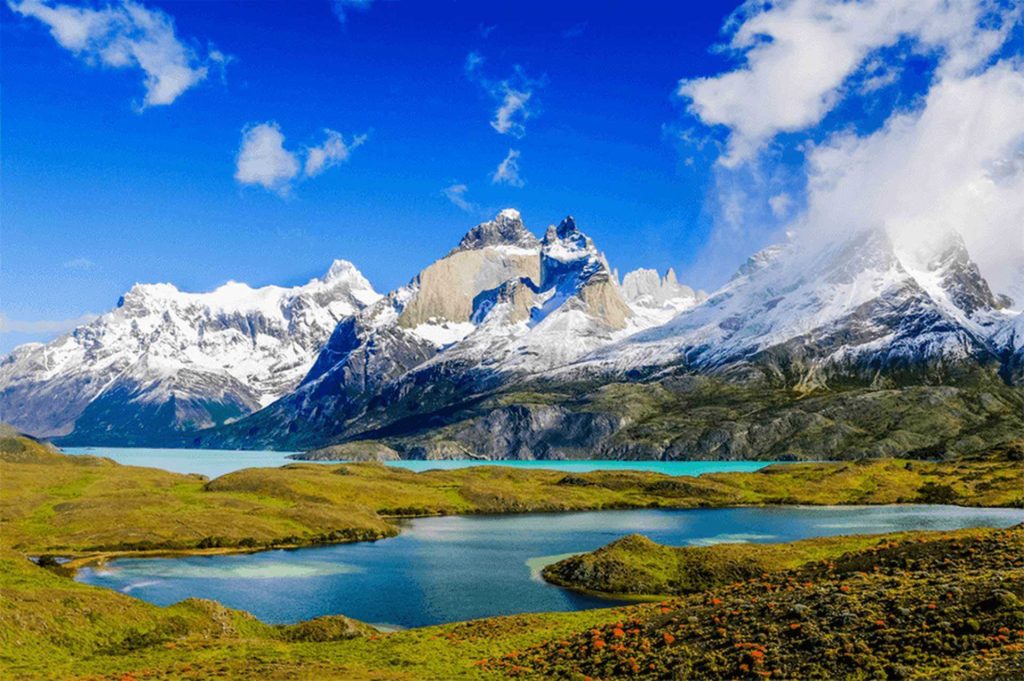
3. Patagonian Lakes and Rivers
Patagonia is home to some of the clearest and most beautiful lakes in the world. These bodies of water, often fed by glaciers, reflect the surrounding mountains and create a serene atmosphere for visitors.
Lake District (Argentina and Chile)
The Lake District in Patagonia, located in both Argentina and Chile, is a region of stunning alpine lakes, including Lake Nahuel Huapi, Lake Llanquihue, and Lake Ranco. These lakes are known for their crystal-clear waters, which reflect the surrounding snow-capped mountains.
- San Carlos de Bariloche: This picturesque Argentine town on the shores of Lake Nahuel Huapi is a popular destination for outdoor activities such as hiking, fishing, and kayaking, and offers stunning views of the lake and surrounding peaks.
- Puerto Varas: On the Chilean side, Puerto Varas is a charming town located on the shores of Lake Llanquihue, offering a mix of outdoor adventures and a glimpse into the region’s German heritage.
Lake Viedma
Lake Viedma is one of Patagonia’s largest lakes and is located at the foot of the Viedma Glacier in Argentina. The lake’s deep blue waters are a striking contrast to the white icebergs that float on its surface, creating a surreal and mesmerizing scene.
- Boat Tours: Visitors can take boat tours across the lake, exploring the nearby glaciers and getting up close to the floating icebergs.
Tierra del Fuego Archipelago
The Tierra del Fuego Archipelago in the far south of Patagonia is a remote and rugged region filled with fjords, channels, and islands. The lakes and waterways in this region are often surrounded by dense forests, creating an unspoiled wilderness.
- Ushuaia: The city of Ushuaia, located at the southern tip of Argentina, is the southernmost city in the world and serves as the gateway to Tierra del Fuego. Visitors can explore the nearby Beagle Channel by boat and enjoy the stunning views of the surrounding mountains and waterways.
4. Patagonian Wildlife
In addition to its stunning landscapes, Patagonia is also home to a rich variety of wildlife, from the iconic guanacos and Andean condors to the elusive pumas. The region’s diverse ecosystems, including forests, grasslands, and coastal areas, support an incredible range of animals.
Guanacos and Vicunas
Guanacos, relatives of the llama, are commonly seen grazing on the Patagonian plains, while vicunas, a smaller relative of the guanaco, are found in the high-altitude regions. Both animals are important to the local ecosystem and are a favorite sight for visitors.
Andean Condors
The Andean condor, one of the largest flying birds in the world, is frequently spotted soaring over the Patagonian mountains. With a wingspan of up to 3.3 meters, these majestic birds are often seen gliding high above the cliffs in search of food.
Pumas
Patagonia is one of the few places in the world where you can catch a glimpse of the elusive puma, also known as the mountain lion. These apex predators are known for their stealth and agility, and sightings are rare but highly prized by wildlife enthusiasts.
5. Conservation and Sustainable Travel in Patagonia
Patagonia is a region that faces increasing pressures from tourism, climate change, and human activity. To ensure that this wild beauty remains preserved for future generations, conservation efforts are underway across both Chile and Argentina.
- National Parks and Reserves: Both Chile and Argentina have designated large portions of Patagonia as national parks and protected reserves, such as Torres del Paine National Park and Los Glaciares National Park, to help safeguard its ecosystems.
- Sustainable Tourism: Local communities and tourism operators are working together to promote responsible and sustainable tourism practices that minimize the environmental impact and contribute to the protection of Patagonia’s unique landscapes.
Conclusion
Patagonia is a place where nature reigns supreme, and its untamed beauty is nothing short of awe-inspiring. From its towering peaks and massive glaciers to its crystal-clear lakes and diverse wildlife, Patagonia offers some of the most spectacular natural scenery in the world. Whether you’re an adventurer seeking to trek across glaciers, a photographer wanting to capture the majesty of the mountains, or simply someone who wants to experience the wild beauty of the southernmost reaches of the Earth, Patagonia offers an unforgettable journey into the heart of nature’s wonders.


